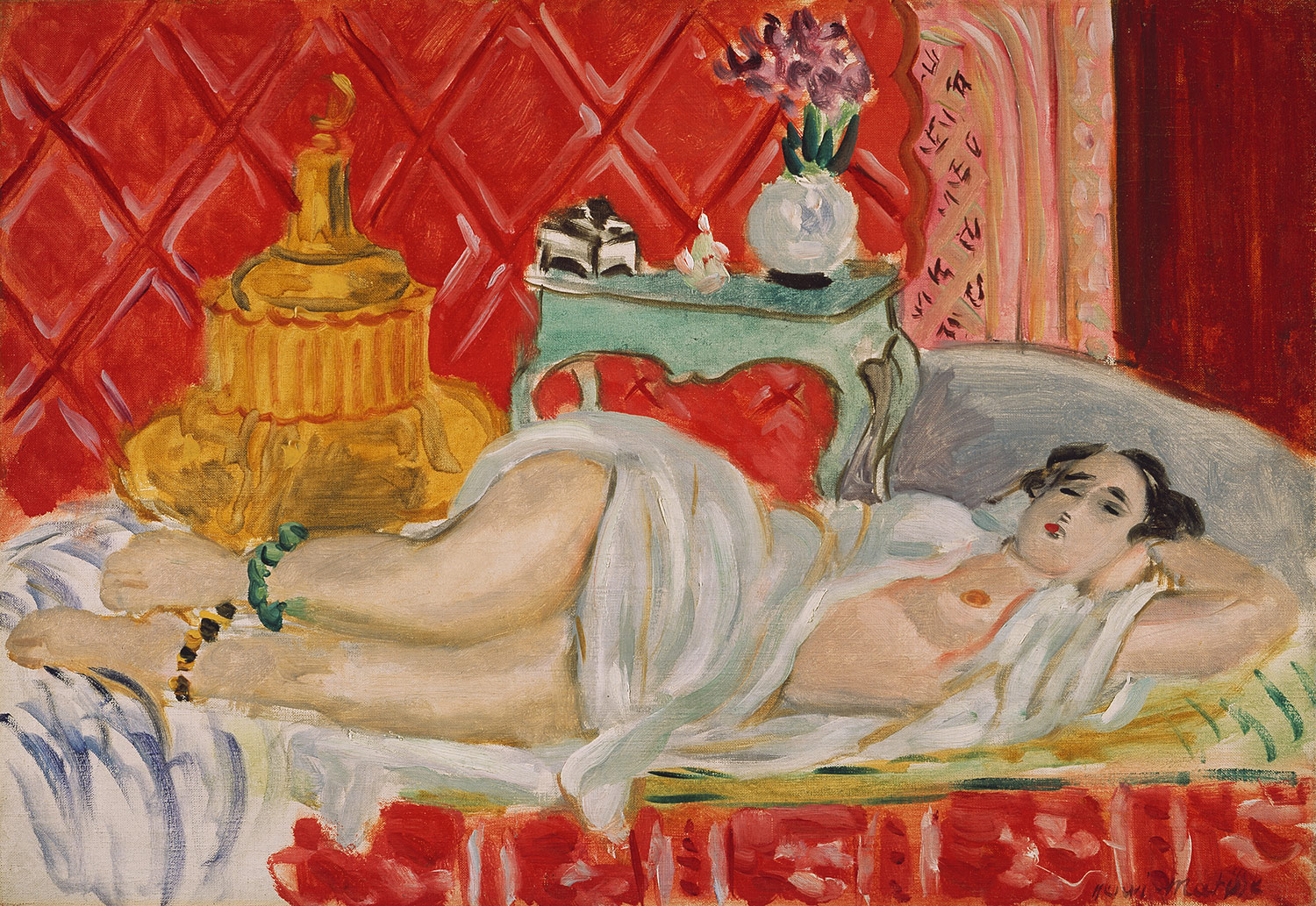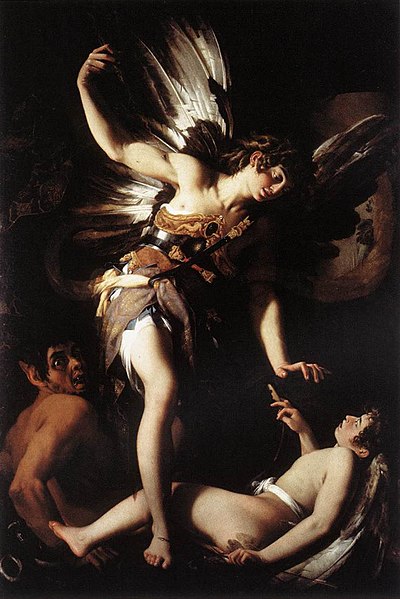This was the final drawing I did in this class, so I wanted to make it special. I decided to paint with watercolor, and I like how it came out. I tried to create light with bright orange, dark with blue, and use the tones in between for shading. The most difficult thing, besides getting the color I wanted out of the paint, was getting colors to blend. Unfortunately, you can still see clear lines where colors end and others begin, which doesn't look too bad, but it wasn't intentional. In fact, this painting mostly thrives on dumb luck. Looking at it now, I see a ton of great parts that make the painting great, but I know I didn't do them. Or at least, I didn't plan to. Still, I think of this painting as a breakthrough for me.

RECLINING ODALISQUE (HARMONY IN RED) - HENRI MATISSE
I like how here Matisse makes the model's skin tones blur almost to the point where you can't tell where one starts and the other begins. The same applies for the pattern in the background of the portrait. It is this sfumato, painting without borders and lines, that I have never been able to reach. It still eludes me, but at least now I know what I have to work on next.
Here are some of my other works from the end of the semester:
SLEEPYTIME
In this one the model almost looks a little too masculine. But I like some of the detailing on the cloth. It's too bad I only see how ridiculous my stool looks from this far away, I could have corrected that.
FINAL LIZARD FACE
I did it again, with the face. This one had come out rather nicely and I didn't want to let it stay unfinished, but I ran out of time to get her face in there. So, I replaced it with another lizard. And I added that sword in there too. Also, the sailboat in the background. So I made a few minor artistic changes.
WHAT ARE YOU DRINKIN
I just like how her face came out in this one. And the Dunkin Donuts cup. A huge iced coffee kind of contrasts with the solemn artistic tones the studio was giving off, I thought it was funny. I'm only noticing now that her right arm is a little too thick around the bicep area.
WILLY'S FACE
This is what Willy's face would look like if it was ridiculously large and sort of in your face. And sort of unfinished. Usually, I try to block in some hair when I draw, but I completely forgot to do his. It almost makes him look like an entirely different person.
















